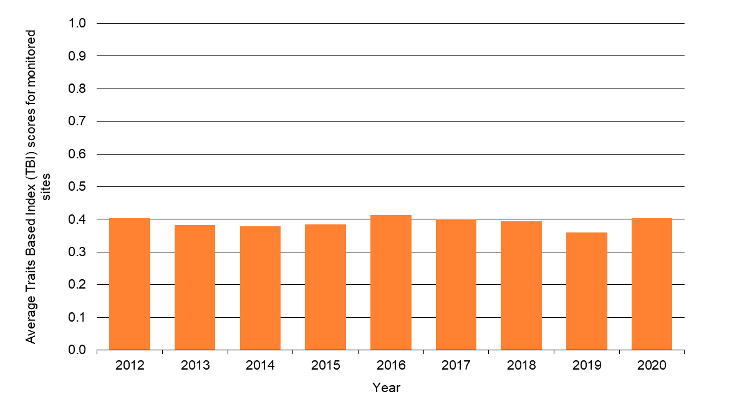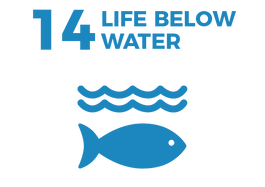Project Report
SDG 14
January 2023
Maintain or enhance the mauri of our coastal and marine waters to ensure healthy ecosystems so that we can also enjoy mahinga kai and swimming.
ACHIEVING OUR TARGET
MEANS THAT:
Our coastal ecosystems are healthy reflecting the mauri from the mountains to the sea and provide for the enjoyment by people for swimming, collecting food and other activities
Global Picture
Between 2018 and 2022, the average degree of implementation of international instruments to combat illegal, unreported and unregulated fishing has improved across the world. In this period, the global aggregated indicator has risen from 3 to 4 (out of a maximum score of 5). Countries have thus made good overall progress with close to 75 per cent scoring high in their degree of implementation of relevant international instruments in 2022 compared with 70 per cent in 2018.
In the International Year of Artisanal Fisheries and Aquaculture 2022, the level of adoption of regulatory frameworks supporting small-scale fisheries and promoting participatory decision-making has improved worldwide. The average global score has risen to 5 out of 5 in 2022, up from 4 out of 5 in 2020 and 3 out of 5 in 2018.
Overall, many States have ratified or acceded to the 1982 United Nations Convention on the Law of the Sea (168 parties) and its implementing agreements (Agreement relating to the Implementation of Part XI of the United Nations Convention on the Law of the Sea of 10 December 1982: 151 parties; and Agreement for the Implementation of the Provisions of the United Nations Convention on the Law of the Sea of 10 December 1982 relating to the Conservation and Management of Straddling Fish Stocks and Highly Migratory Fish Stocks: 91 parties). While many States have implemented those instruments through legal, policy and institutional frameworks, this remains an area for further progress in several developing countries, especially least developed countries.[1]
Aotearoa | New Zealand Picture
According to a 2022 MfE report[2], the marine environment continues to be affected by a range of individual and cumulative pressures. Increases in greenhouse gas emissions from human activities continue to drive increased ocean acidification, sea-level rise, and sea-surface temperatures. Our activities on land can also have detrimental effects through excess sediment, nutrient, and plastic pollution.
According to a 2022 MfE report[2], the marine environment continues to be affected by a range of individual and cumulative pressures. Increases in greenhouse gas emissions from human activities continue to drive increased ocean acidification, sea-level rise, and sea-surface temperatures. Our activities on land can also have detrimental effects through excess sediment, nutrient, and plastic pollution.
At sea, our activities place pressure through commercial and recreational fishing, aquaculture, extraction of natural resources, introduction of non-indigenous species, and coastal development. Key pressures noted in the report are:
Climate change is affecting our marine environment, contributing to increasing ocean acidification, rising sea levels, and increasing sea-surface temperature
Plastic litter entering our marine environment may have long-lasting impacts and remain in our marine environment for centuries
Human activities on land can place pressure on our marine species, habitats, and the mauri of the environment.
Human activities at sea place a range of pressures on our species and habitats
Ongoing introductions of non-indigenous species to Aotearoa continue to be a risk to our national biodiversity
The physical form of the marine environment influences its susceptibility to different pressures.
Waikato Picture
Waikato Progress Indicators

Many of the sites are moderately healthy (having a TBI score between 0.3 and 0.4), some are in poor health (having a TBI score less than 0.3), and some are in relatively good health (having a TBI score greater than 0.4).
At most sites, there were only slight changes in the TBI, and therefore in estuarine health, between 2012 and 2020. We expect the TBI score to vary slightly from year-to-year due to natural variability. There is not yet enough data to analyse trends statistically
The extent of mangroves in 4 sentinel estuaries has increased on average 19.7% from 2002-2017
2018 sediment quality data concludes that the risk of toxic effects from trace elements on sediment-dwelling organisms is generally low in all sampled estuaries
Most of the coastal marine area of the Waikato has some form of protection, however less than 1% (880 Ha) is Marine Reserve
WRC data shows there are 326 properties that are within the identified current coastal hazard areas on the east coast of the Coromandel Peninsula in 2017. Of these properties, there are 176 dwellings at risk.

